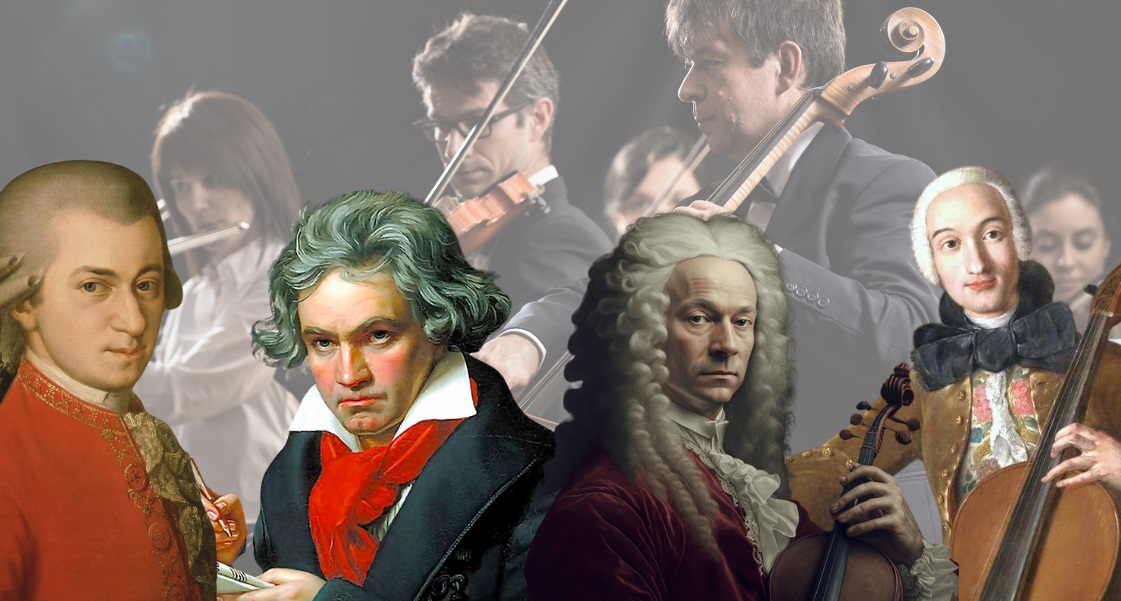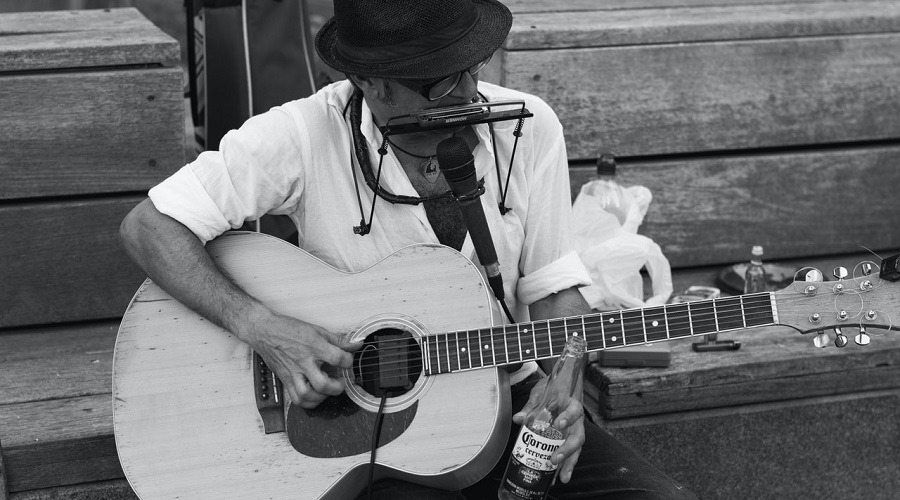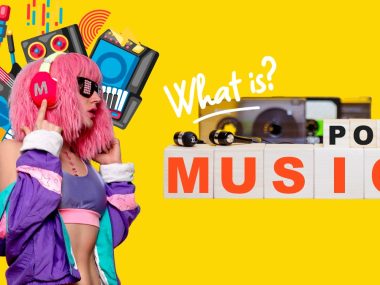In 1685, Bach was born to start the era of Classical music. It’s considered the traditional music of the Western World and is different from Pop and Folk music.
The roots of Classical music go back to church music and the tunes played in the royal courts of Western Europe. The period of Classical music started after the Baroque period, although both music genres were equally popular at some time.
So, what are the types of Classical music? What are the traits of these music genres? Keep on reading to find out more about the types of Classical music.
What is Classical Music?
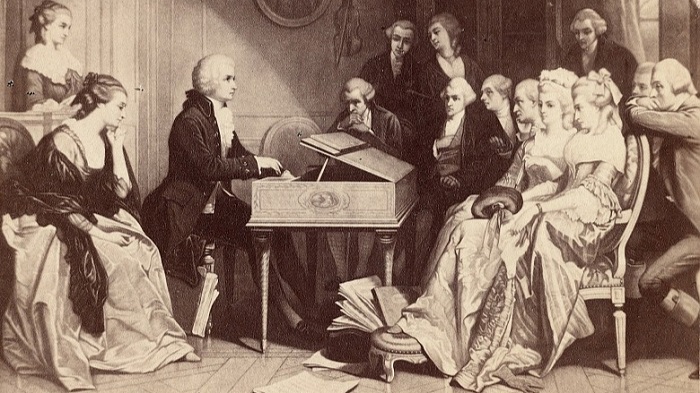
The name of Classical music comes from the Latin word classicus, which refers to the highest class of Roman citizens. This probably explains why this music was associated with rich people and royal families.
Classical music is a broad term that involves lots of subgenres based on the genre’s definition. The term can include music genres from Medieval music to Contemporary music produced in the 2000s.
However, the typical Classical era ranges from the 1750s to 1820s. During this period, the piano became the most dominant keyboard instrument, although musicians continued to use instruments from the Baroque period, like the violin and cello.
Nevertheless, the musical phrases of the Baroque period weren’t used in Classical music, as the phrases became clearer and the music became more harmonic.
Musicians like Mozart, Beethoven, and Haydn dropped the musical decorations that were widely used in Baroque music to create clearer and simpler compositions.
What Are the Types of Classical Music?
Many music genres can be classified as types of Classical music.
In this section, we’ll highlight some genres of Classical music. Some of them are quite famous while others are less known because they’re no longer used. So keep on reading to learn more about their definitions, their traits, and most famous composers.
1. Concerto
Unlike a group ensemble playing in an orchestra, the Concerto is a form of Classical music that allows a soloist to show off their talent.
In some cases, a group of soloists can play against the orchestra, and in this case, it’s known as Concerto Grosso. However, this particular music form was more popular during the Baroque period.
The Concerto is related to the rise of virtuoso performers, although they were present in earlier musical forms.
Concertos can also incorporate forms of vocal music. Bach was a pioneer of the Concerto as he composed music by incorporating voices and instruments.
In this music subgenre, the instruments usually accompanied the voice parts. Mozart was also known for his concertos.
There are several subgenres of concertos, like the cello concerto. The cello concerto is a solo for the Concerto versus the orchestra or a smaller group of instruments. Although this subgenre emerged in the Classical period, it gained its full popularity during the Romantic era.
The clarinet concerto is another subgenre of the Concerto, where the clarinet plays a solo against a concert band. Haydn also wrote trumpet concertos, although this subgenre was more common in Baroque music.
2. Chamber Music
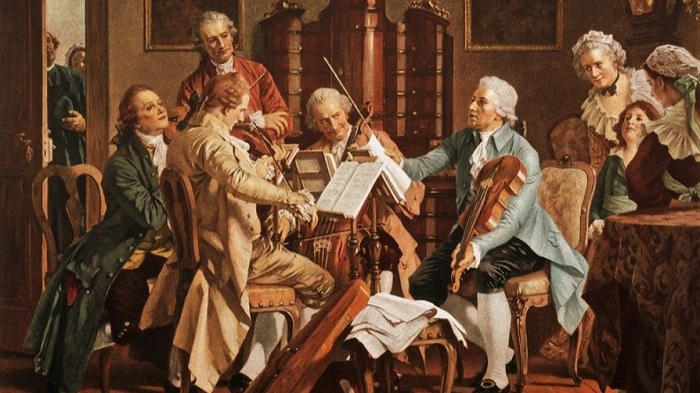
Chamber music is a type of music that’s composed for intimate and smaller groups of musicians. Musicians were playing this music in royal courts, and later this music genre became a popular form in modern music.
Chamber music is considered the music of friends, and it has roots in Medieval music. Joseph Haydn wrote several string trios and duos, 68 string quartets, 45 piano trios, and wind ensembles.
Mozart composed a lot of masterpieces for Chamber music. His music pieces always emphasize the strings, where they always have a counter role to the piano. He also introduced the newly invented clarinet.
Mozart tried more innovative ensembles that would feature the quintet for violin, a cello, horn, and two violas, too. His compositions combine these different instruments, which add a new dimension to the music.
Many other composers like the Italian Luigi Boccherini wrote almost a hundred string quartets and more quintets for two violins, two cellos, and a viola.
Chamber music reflects the social and economic reforms that took place in the 19th century in Europe.
During the early Classical era, composers were actually employees who worked in the royal court or aristocrats’ mansions. Therefore, this music was composed to entertain the guests of those rich people, and this is why it had a very intimate nature.
This explains why most Chamber music pieces were actually composed for those particular people. For example, Boccherini composed Chamber music for the King of Spain, and Mozart composed three string quartets for the King of Prussia.
The music composed would either be played for a particular occasion, or the composer would follow the themes that appeal to the person they worked for.
3. Sonata
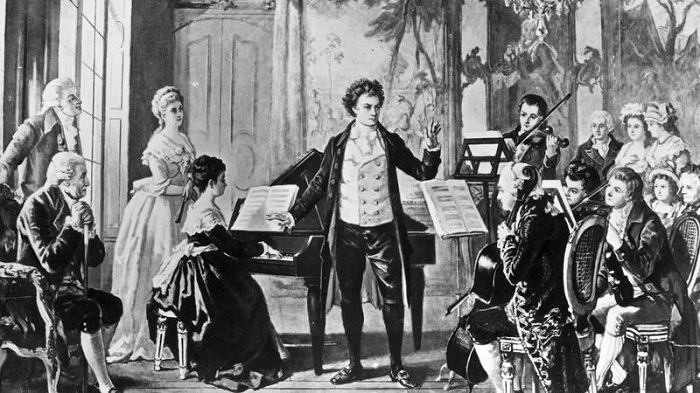
The Sonata is a term used in Classical music to refer to purely instrumental compositions. This term was first used vaguely, but it became extremely important as Classical music evolved.
In the Baroque period, the Sonata was usually written for a single or more instruments played in the basso continuo. The Sonata was written for a solo keyboard instrument or a keyboard accompanied by another instrument during the Classical period.
With more evolution, the Sonata became a term that composers used to refer to multimovement works. Typically the Sonata would be written for a piano or a piano accompanied by another instrument like the violin or cello.
The Sonata is usually made of three movements:
- The Allegro is the first movement that’s used to develop the theme of the work.
- The middle movement is typically slower, which can be Largo, Adagio, or Andante.
- Finally, the closing movement is either Presto or Allegro.
Haydn used a 2-movement Sonata structure and even incorporated a dance movement before the slower movement in his piano sonatas Numbers 6 and 8.
Overall, his Sonata works include seven two-movement pieces, thirty five three-movement pieces, and three four-movement pieces.
Other composers like Boccherini, Beethoven, and Mozart wrote several sonatas. However, during the late Classical period, sonatas of four movements were considered the norm, and those with fewer movements were said to have movements omitted.
4. Quartet
The Quartet is a musical composition written for four instruments or singers. Some musicians consider the Quartet a genre of Classical music, while others consider it as a subgenre of Chamber music.
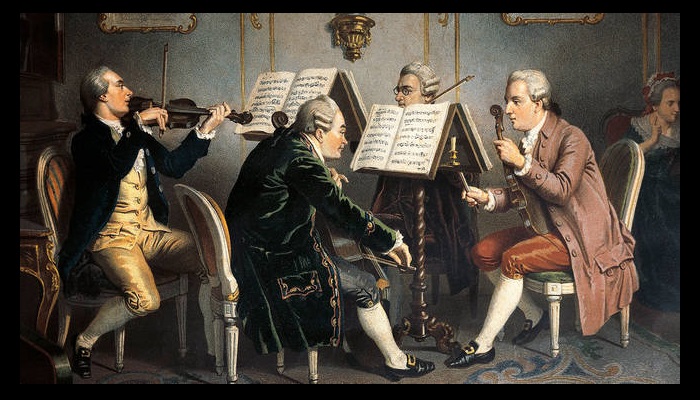
The String Quartet is the most known type of Quartet composition. It most often features two violins, a cello, and a viola, but other arrangements can also be used. Beethoven wrote some of the most famous string quartets.
Other composers like Carl Stamitz used a less-common ensemble in his quartets that were written for two violas, one violin, and one cello.
Quartets also became popular in Jazz performances later on, where the music would be typically written for a horn, a saxophone or trumpet, a chordal instrument like a guitar or piano, a bass instrument, and a drum kit.
The Piano Quartet became quite popular, where composers like Beethoven, Brahms, and other composers of the Romantic era wrote music for a violin, a viola, a cello, and a piano.
Some composers tried to introduce more innovative ensembles. For example, the Quartet for the End of Time by Messiaen features a clarinet instead of a viola.
Brahms and Schubert also wrote vocal quartets where four voices would be accompanied by an instrument, typically a piano.
The Ninth Symphony by Beethoven and the Requiem by Verdi are examples of this musical composition. The voices are usually a soprano, alto, tenor, and bass for mixed ensembles.
5. Ballade
The Ballade is a music genre that originated in the late 1800s, where a narrative poem is told in the musical tradition of the Lied. These compositions usually have a strong lyrical and dramatic narrative, which later led to the evolution of Classical songs.

The Piano Ballade is a subgenre of the Ballade, and it features a solo piano with a ballade-like narrative style. Chopin’s Ballade Number 1 in G Minor is an example of this subgenre.
Ballade music relies heavily on the narrative structure of folk poetry. The musical parts are structured in a predetermined order, and the succession is controlled by the music’s frame.
Some ballades are closely related to the poetry of certain poets. For example, Chopin’s work was inspired by the poetry of Adam Mickiewicz, who was a close friend of his.
Other composers include Franz Liszt, Claude Debussy, Norman Demuth, and George Enescu.
6. Opera
Opera is a genre of Classical music, where the music plays a fundamental role supported by the vocals sung by singers. The performance is usually held at an Opera House, where the singers are accompanied by an orchestra or a smaller ensemble.
The word “Opera” itself means work, which translates to the effort done and the final result of the music produced. The earliest example of this music genre is the Dafne by Jacopo Peri, which is an attempt to revive the Greek drama.
Opera originated in the Baroque period but became more solid during the Classical period.
The music played could be divided into two different types, dry or secco, where the music and rhythm played were dictated by the nature of the words spoken or sung, or accompagnato, where the orchestra provided accompaniment.
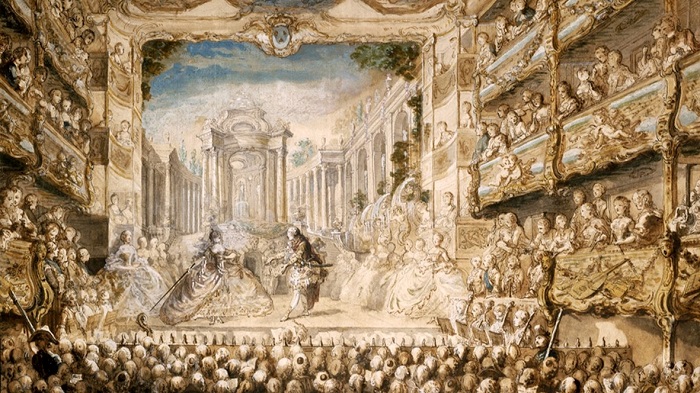
In the beginning, this musical genre was confined to the royal courts. During this period, some singers like Madama Europa gained wide popularity. Later on, Opera compositions were played during carnivals or in live public performances that people paid to witness.
Opera has several subgenres like the Opera Seria, which is a term used to refer to the Italian Opera that prevailed between 1710 and 1770.
Opera Seria was a more serious type of Opera, and it soon became unfashionable. Famous composers include Vivaldi, Galuppi, and Handel.
An Operetta is a form of light Opera. It’s lighter than the regular Opera in terms of the orchestral size, nature of music, length of work, musical composition, and overall theme.
It became popular around the 1850s, and famous composers include Johann Strauss, Franz Lehar, and Francisco Alonso.
Ballad Opera is a term that refers to English stage entertainment that originated in the early 18th century. It’s characterized by the popular use of tunes with spoken dialogue.
7. Divertimento
The word Divertimento comes from the Italian word divertire or to amuse. This musical genre was developed in the late 18th century as a fun and lighthearted genre of Classical music, instead of the more serious and darker genres.
Divertimento was mostly composed for a smaller ensemble. This is why it was usually played by an ensemble that would entertain guests over dinner parties, banquets, or other social events.
Although some serious works belong to this genre, the term was and is still used to describe informal music with light quality.
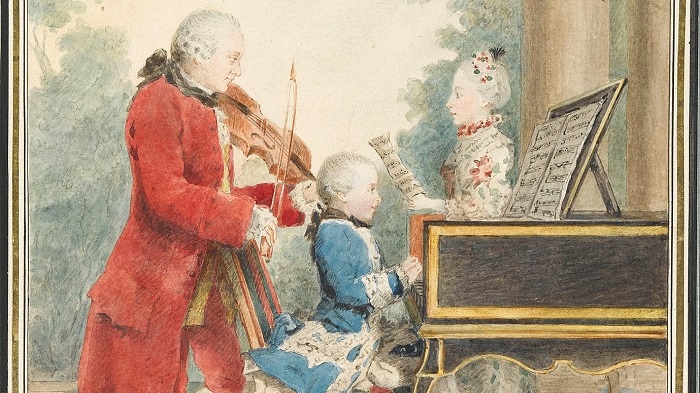
Divertimento was later divided into several subgenres, as composers were trying to define this music. Since it had no clear, specific form, Divertimento could be divided into dance and theatrical subgenres.
This music genre also led to the development of other types of music like the cassation, serenade, and notturno. In the 19th century, Divertimento music was usually played outdoors in after-dinner gatherings.
In most cases, this musical genre has one to nine movements. The Salzburg Symphonies K. 136, K. 137, and K. 138 represent examples of this musical form.
This type of Classical music continued to be popular in the 20th century in the works of Alfred Reed, Paul Graener, and Robert Davine.
8. Arabesque
Although Classical music is the trademark of Western music, Arabesque is a genre where the tunes are used to create the atmosphere of Arabic architecture.
Compared to other music genres, Arabesque can be considered as heavily-embellished with music phrases that show the slowing of time.
Composers started to compose music using this genre, especially between 1850 and 1900, when Europeans became more interested in Middle Eastern culture.
Some composers like Johann Friedrich Franz Burgmüller, Cécile Chaminade, and Edward MacDowell incorporated this genre in their compositions, even if they used other genres in their works.
9. Capriccio
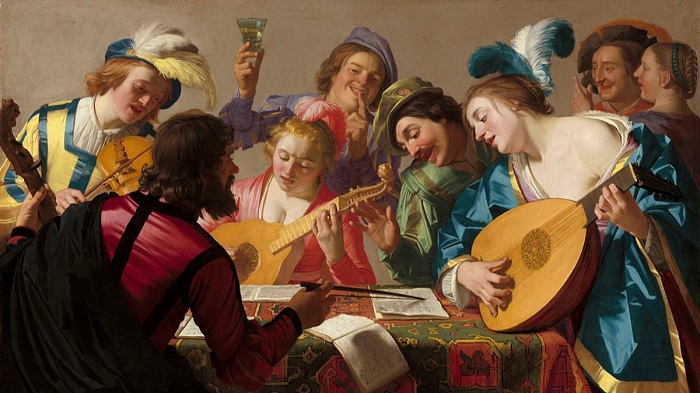
The Capriccio or Caprice is a genre of Classical music that features free form and shows a lot of character. In most cases, the composition is fast and intense.
This form of music first emerged in the 16th century, when it was used to refer to madrigals. This is a form of vocal music, where a group of two to eight voices joins to produce one of the most famous forms of secular music.
However, by the 17th century, the Capriccio was used by composers to refer to compositions that are either played by instruments or combined instruments and voices.
Famous works of this genre include Charles-Valentin Alkan’s Capriccio alla soldatesca and George Frideric Handel’s Capriccio in G Minor.
10. Impromptu
This music genre is considered as a freestyle genre of Classical music, and the name is based on a word that means offhand to describe the nature of the melodies.
Compared to other forms of Classical music, this genre tried to break free from the rigid boundaries and limitations.
A soloist usually engages in an extended improvisation in the composition, influenced by that particular time.
The spur-of-the-moment nature of this musical genre helped to solidify its popularity in the Romantic era, where composers were driven mainly by their emotions.
Chopin composed four pieces that belong to this genre, including his famous Fantaisie-Impromptu. The English composer Johann Baptist Cramer is probably the first composer to record the term Impromptu.
11. Oratorio

The Oratorio is a large musical composition that’s usually written for an orchestra, soloists, and choir. It’s very close to the Opera, but the Opera is a musical theater, while the Oratorio is a concert piece.
In this Classical music genre, the choir plays a significant role, and there are no costumes or props like the Opera. However, it’s one of the musical forms that were used in churches because, in most cases, the vocals were obtained from the Bible.
Composers were influenced by their own societies and religious beliefs while composing pieces that belonged to this musical genre. For example, Catholic composers built their music based on stories of the lives of saints. Protestant composers took their stories from the Bible.
12. Rhapsody
This Classical music genre is characterized by its freestyle and free-moving structure. Works are usually made of one movement, but each composition features different tones, themes, and moods.
The Rhapsody is characterized by the distinction in musical styles played, all featuring the same idea. When it was first introduced, some compositions featured vocal and instrumental elements.
However, as this musical genre became more popular in the mid-19th century, compositions became purely instrumental, usually played by the piano.
Brahms’s Alto Rhapsody is an example of Vocal Rhapsody. He also wrote the Rhapsody in E-flat major for a solo piano. Other composers of this genre include Ernő Dohnányi, Hugo Alfvén, and James P. Johnson, who also played a crucial role in the evolution of Jazz.
